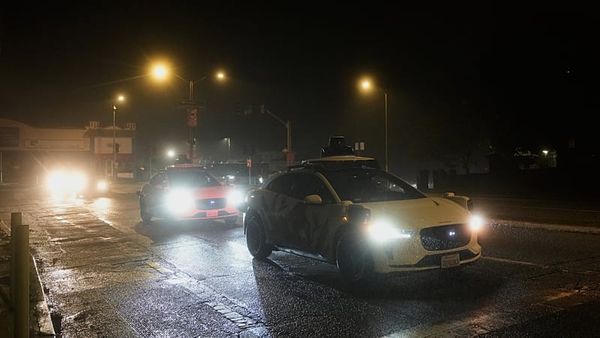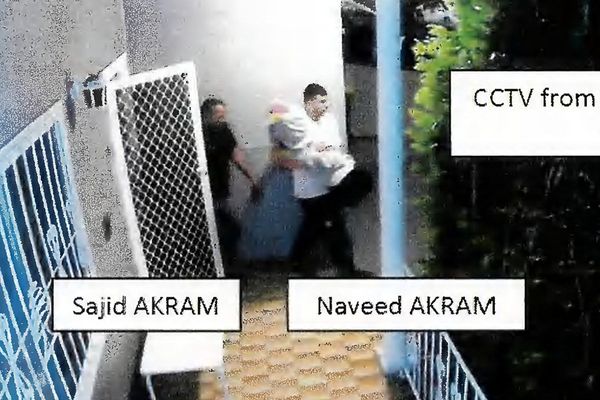
Eleven Palestinians were killed early on Wednesday morning after Israeli forces opened fire on a crowd waiting for food trucks in central Gaza, civil defence officials in the devastated territory have said.
More than a hundred Palestinians have died in recent days after being targeted by the Israeli military in Gaza as they gathered near food distribution centres or on routes along which trucks were expected to travel.
Mahmoud Bassal, a civil defence spokesperson, said Israeli forces had “opened fire and launched several shells … at thousands of citizens” who had gathered to queue for food in central Gaza, near the strategic Netzarim corridor which crosses the territory and is partially held by Israeli forces.
In a statement, the Israeli military said its forces operating in central Gaza identified “a group of suspicious individuals” approaching “in a manner that posed a potential threat to the forces”.
It said its troops then fired “warning shots”, but it was “unaware of injuries”.
Khalil Al-Daqran, spokesperson for al-Aqsa hospital in Deir al-Balah, said 11 dead and 72 wounded victims had been brought there, as well as the al-Awda hospital in Nuseirat.
Medical facilities were completely overwhelmed with wounded, he said.
Nasser Abu Samra, the head of the emergency department at al-Awda hospital, said: “This has become an almost daily routine – we deal with these cases every single day, and on average, we receive no less than 70 to 80 cases per day, just from the aid distribution point in Netzarim.”
Food has become extremely scarce in Gaza since a tight blockade on all supplies entering Gaza was imposed by Israel throughout March and April, threatening many of the 2.3 million people who live there with a “critical risk of famine”.
Since the blockade was partially lifted last month, the UN has tried to bring in aid but has faced major obstacles, including rubble-choked roads, Israeli military restrictions, continuing airstrikes and growing anarchy.
Aid officials said 23 UN trucks on average had entered Gaza through the main checkpoint of Kerem Shalom in recent days but most have been “self-distributed” by hungry Palestinians who stopped them or looted by organised gangs.
The World Food Programme (WFP) said on Wednesday that over the last four weeks, it has been able to dispatch just 9,000 metric tons of food aid into Gaza, which is “a tiny fraction of what a population of 2.1 million hungry people needs”.
It added: “Only a massive scale-up in food distributions can stabilise the situation, calm anxieties and rebuild the trust within communities that more food is coming.
“Safer and more reliable convoy routes, faster permission approvals, dependable communication services, and the opening of additional border crossings are urgently needed now.”
On Tuesday morning, at least 59 Palestinians were killed and hundreds more wounded in Khan Younis, according to medical officials, as they waited for a truck loaded with flour.
Many of the incidents in previous weeks have involved Israeli forces opening fire on crowds trying to reach food distribution points run by the Gaza Humanitarian Foundation (GHF), a private organisation that began operating in Gaza last month with Israeli and US support.
Israel hopes the GHF will replace the previous comprehensive system of aid distribution run by the UN, which Israeli officials claim allowed Hamas to steal and sell aid.
UN agencies and major aid groups, which have delivered humanitarian aid across Gaza since the start of 20-month-long war, have rejected the new system, saying it is impractical, inadequate and unethical. They deny there is widespread theft of aid by Hamas.
The GHF’s provisions so far have been grossly inadequate, humanitarian officials in Gaza say.
UN agencies and major aid groups have refused to cooperate with the GHF over concerns it was designed to advance Israel’s military objectives.
Israel launched its campaign aiming to destroy Hamas after the group’s 7 October 2023 attack on southern Israel, in which militants killed about 1,200 people, mostly civilians, and took another 251 hostage. The militants still hold 53 hostages, fewer than half of them alive, after most of the rest were released in ceasefire agreements or other deals.
The Gaza health ministry said on Tuesday that 5,194 people had been killed since Israel resumed major operations in the territory on 18 March, ending a two-month truce.
The civil defence agency in Gaza said a further 19 people were killed in three Israeli airstrikes on Wednesday, which it said targeted houses and a tent for displaced people.
Medics in the territory put the death toll higher, saying separate airstrikes on homes in the Maghazi refugee camp, the Zeitoun neighbourhood and Gaza City in central and northern Gaza killed at least 21 people, while five others were killed in an airstrike on an encampment in Khan Younis in southern Gaza.
The death toll in Gaza since the war broke out has reached 55,493, according to the health ministry.







